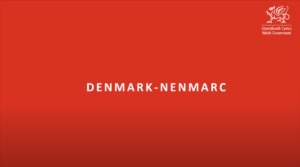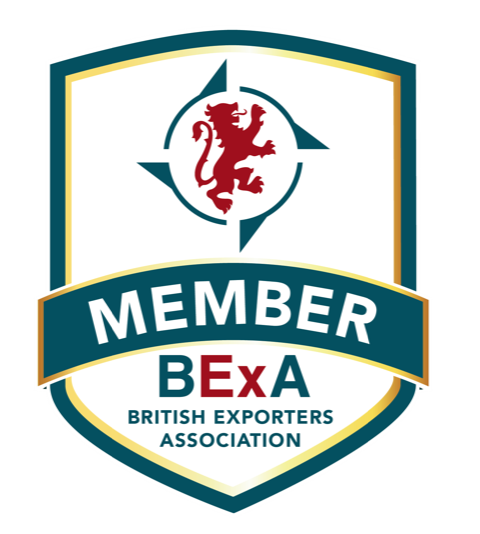It’s December already and another year is nearly over. Thoughts turn to the Christmas festivities and the New Year looming. Is 2024 the year you will look to expand your business into international markets? There’s a world of opportunity out there waiting for your product or service.
But how ready are you for the export journey? Are you prepared? Is your product/service right for your target markets? What’s the best route to market?
Take our short 16-question survey to find out your Export Readiness Score. In just a few simple multiple-choice questions, which will take no more than 3 minutes to complete, we’ll provide you with a percentage score and individual report showing the areas you need to focus on to be export-ready.
It’s been a busy year, so we’ve made it easy for you. Nothing too demanding, but a report at the end which will prove invaluable for your planning for international growth when you come back fresh in the New Year.
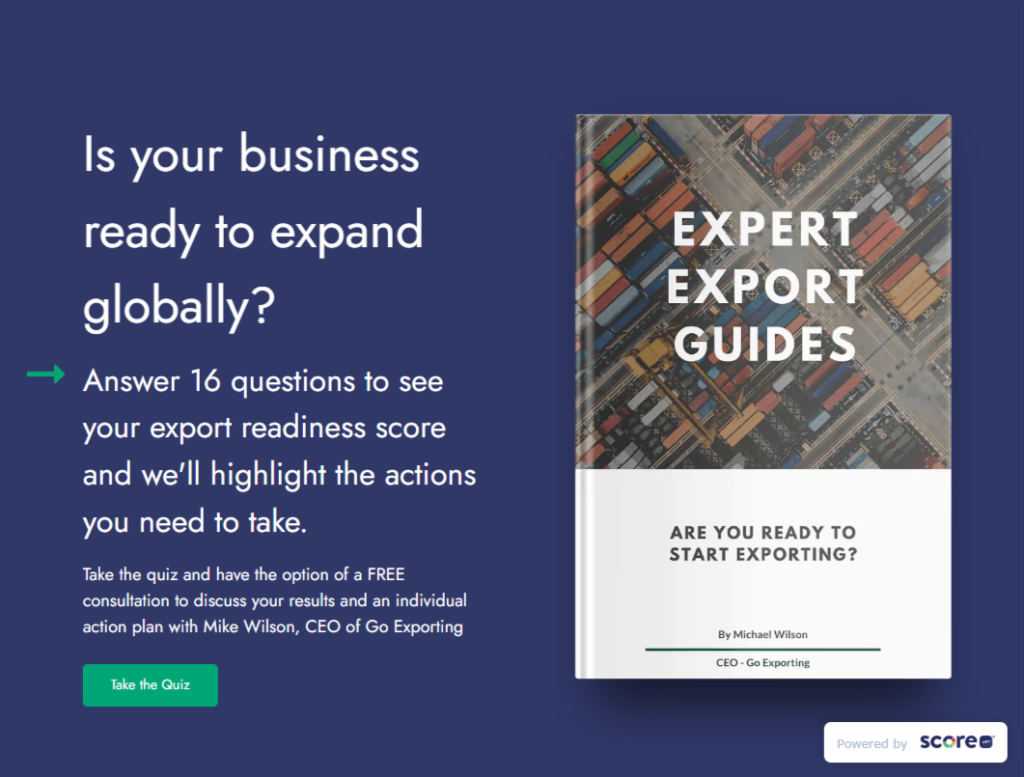
We would like to take this opportunity to thank you for following Go Exporting in the last year and reading our Expert Exporter articles, either on the website or via our newsletter. We hope it has proven interesting, useful, and sometimes amusing! We know you receive a lot of emails, so your time is precious.
We wish you a wonderful Merry Christmas and a very prosperous, international New Year!
Last weekend I went to see a special immersive planetarium film experience celebrating 50 years since the launch of this iconic album. It was quite an event, with the music and visual effects combining to create a truly wonderful experience. You had the feeling of walking on the moon and pushing the boundaries of the universe!
What has this to do with exporting I hear you ask? Well, it started me thinking about two important points.
Firstly, looking at the earth from the edge of the universe reminded me how small our planet, its continents and countries are in the grand scheme of things. Yet sometimes as business people our worlds can seem small, often restricted to our own borders.
In reality we are restricted only by our own thinking. There is a world of opportunities within reach, without ever having to leave this planet! We just need to open our minds to the possibilities.
That is not to say we go blindly off to every country we can find. Being a successful exporter takes careful planning and understanding of our markets in order to concentrate our resources in the most profitable areas. Developing our export growth plan and strategy should not be skimmed over in the rush to make a few quick sales.
Learn more: Export growth planning – how we can help
Secondly, Pink Floyd composed this album in 1973, and 50 years later they are still making £millions from it every year. It’s the gift that just keeps giving. The same can be true of export.
Devise the right strategy in the right markets, appoint the best fit local partners/distributors and the money will flow for years to come.
That’s not to say you won’t have to work at it. Pink Floyd made this anniversary film to promote and celebrate the album. I’m sure it brought a boost in income and probably a whole new generation of fans that will keep the money flowing for another 50 years!
Free download: How to find a distributor
New marketing, new products, upselling options, a fresh approach will be needed along the way. A distributor takes a lot of work. They should be seen as our biggest customer and given the same level of attention and support.
Get the basics right now and export will bring returns for the next 50 years….and beyond!
Go Exporting specialises in helping you to profitably expand in international markets.
For further information and a no-obligation discussion, please contact us today.
Ever wondered why some strategies, which thrive at home, fail spectacularly overseas? What are the secrets to international success? This real-life example will help us to identify those secrets.
Once upon a time, IKEA, the global retail giant, faced an interesting dilemma. When they first expanded into Russia, they thought their tried-and-tested format – self-assembled, minimalistic, functional furniture – would work just as well as it had in other countries. The only problem was, it didn’t. Sales floundered, and the Scandinavian giant found itself in a conundrum.
Why? Well, it turns out Russian customers were simply not into the whole “DIY” culture that IKEA had so cleverly packaged and sold worldwide. They viewed assembling furniture as a chore, not an adventure. The very USP that had propelled IKEA to success elsewhere was flopping in Russia.
However, IKEA didn’t pack up and leave. Instead, they did something unexpected: they adapted. They hired a swarm of ‘handymen’ available for hire at checkout. These professionals would assemble the flat-packed furniture for the customers at their homes. And voilà! The sales picked up, and IKEA found its feet in Russia.
The lesson here? IKEA learned (perhaps the hard way) that even though they had a winning formula, it was essential to adapt it to meet local tastes and preferences.
Every international market is different. It’s a simple, straightforward fact, but one that’s surprisingly easy to forget. Whether you’re selling furniture, digital products or a service, it’s easy to assume that what works at home will also work abroad. After all, people are people, right?
Well, yes, but also a resounding no. People come with cultural baggage, unique expectations, and distinct ways of life. They approach the world, and the market, with lenses shaped by their histories, their languages, their societal norms. It’s not just about speaking their language – it’s about understanding their idiosyncrasies and catering to their unique tastes and preferences.
Don’t let the simplicity of this insight deceive you. It’s as profound as it is practical. Recognising and adapting to these differences is the hallmark of international success. Just ask IKEA!
It’s just like stepping into an Ikea store, you find products designed and crafted to fit various needs, but imagine if you had a personal guide who’d help you navigate through the entire store, pointing out which product would be perfect for you. It’d be so much more convenient and less time-consuming, wouldn’t it?
It’s the same when you’re planning to expand your business to international markets; you’re stepping into a space that’s packed with opportunities, but it can be a little overwhelming trying to figure out where to start and what to do.
This is where Go Exporting comes in. Our Export Growth Plan Service is designed specifically for those who are ready to venture into international markets but could use a little bit of guidance.
Here’s what our Export Growth Plan Service offers:
- Understand exactly which international markets offer the best opportunity for your business: We do a deep dive to identify where your products or services will make the biggest splash.
- Evaluate and compare markets: Not all markets are created equal, and we’ll help you rank the opportunities, so you know where to concentrate your efforts.
- Understand Customs and Compliance Rules: We help demystify the often-complex world of international trade regulations, ensuring your business stays on the right side of the law.
- Define your best route to market: We lay out a clear, step-by-step path to get your products or services from concept to customer.
- Identify key distributors, partners, and customers: We help you identify the key players in your new market who will help your business succeed.
Think of our Export Growth Plan Service as your compass, guiding you towards successful international expansion.
Time to unlock your business’s global potential!? Click here to discover how the Export Growth Plan Service can pave the way for your international success! Let’s conquer the globe together.
Remember, every international market is a unique treasure trove of opportunities waiting to be explored. As you embark on your export journey, keep in mind that understanding cultural nuances and consumer preferences will be your key to unlocking untapped potential. Just like assembling that first piece of IKEA furniture, take it one step at a time, and soon you’ll see your business flourish in uncharted territories.
And here’s a bonus insight: Building relationships is the currency of global success. Cultivate authentic connections with your partners, customers, and distributors in these new markets. Trust, respect, and open communication will be your most valuable assets in this grand global adventure.
Happy exporting, and may your business venture be an exciting and rewarding odyssey!
Welcome back to the September edition of our newsletter. It’s been a very hot summer in the UK with temperatures reaching over 40 degrees for the first time in history! Global warming is here and needs to be tackled sooner rather than later. Despite the heat, hopefully everyone in the Northern Hemisphere is back from their summer breaks suitably refreshed and ready to expand their international business.
The first question to ask is Where? Where are the best opportunities for my business? Throughout the articles in our Expert Exporter resource hub one theme is consistent – the need to focus. It is impossible to export everywhere at once. A scattergun approach simply will not work in the long term. You may have some short-term success by hitting the right customer at the right time, but to profitably expand your exports you need a well thought out and suitably resourced plan. It is counterproductive to try to enter 10 countries all at once if you only have the manpower and resources for one. Better to do one well and then move on to the next when the time is right.
How do you narrow down and identify your target market? Gut instinct? NO!
You need to take a much more measured and scientific approach than that, really get to know the possibilities for your product or service, decide which will be your target market(s).
Look in-house.
Research your own data. Where do your enquiries come from? Where do you sell at the moment? Do you understand why? What are the drivers for those customers to buy from you? Is it a one off or is there a real market demand? Ask them for feedback.
Where your competitors sell.
Where do they have their own sales team, a distributor or agent? Where do they sell directly from head office? Where do they attend conferences and exhibitions? Where do they advertise? Are they a member of any overseas trade bodies? Have they invested in specific country approvals?
Get to know them better than ever before. They may well save you a lot of time, money and effort by pointing you in the right direction. Don’t worry that they are there first, it just shows there is a market and you already know what your value proposition is in order to sell against them.
Market Size Data
Competitors and in-house data are helpful, but what if they are misleading? Is there any official data on the size of market in your target country or countries? If not, is there any private research available or could you commission some? Consultants, like Go Exporting, often offer this as a cost-effective service to clients in order to build a longer-term relationship.
Customer Analysis
We’ve already looked at where your and your competition’s existing customers are, but we also need to analyse whether the buyer for your products or service is the same in each market.
Is there a different supply chain set up? Are there specifiers involved? Does the government or ultimate client purchase directly, or do subcontractors procure as part of an overall package or service? The distinctions may seem slight, but it can make a big difference to the ease of market entry and therefore the market potential.
Barriers to Entry
So, we’ve identified what appears to be a lucrative country for our products. There is a good market size and we have identified who the potential customers are. All seems good, but we are not yet ready to commit. First, we must identify the barriers to entry.
Are there approvals required before we can sell? Is there any national certification or government registration process? Is there trade body we need to be a member of? Is membership open or closed?
How strong is the local competition? Are there any well-established foreign competitors? We should not be frightened of competition, after all it is a sign that there is a market, but we should be aware of their strengths and weaknesses, their market position. Market share can be bought, but is it worth it in the long run?
What are the transport links like? Will freight costs make our product uncompetitive?
Is language going to be a barrier? Is English commonly spoken in business?
Look at all the angles to see where obstacles may lie which could derail or seriously delay market entry.
Currency
How are you going to sell in the target market? Will you demand your home currency? If so how will this affect sales? Is the currency readily available?
If you accept the local currency what are the likely fluctuations in exchange rate? Will you bank accept the currency or will you need a local bank account? Is that feasible without a local entity? Are you prepared to do that?
Currency can make or break market entry, so be clear what you are taking on from the beginning and your acceptable level of risk. If yours is a high margin product or service fluctuations are not such an issue, but for lower margins beware and ensure price fluctuation is built in to contracts of sale.
Country Risk
How politically and economically stable is the target country? Is the regime likely to change? What is the likelihood that international sanctions or tariffs are applied? Is the economy growing or shrinking? Do the banks have any liquidity issues or concerns?
How comfortable do you feel about the risk?
Consolidate & Rate
We have developed a bespoke system for comparing countries, allocating a score and developing a league table of potential targets. We utilise this when we carry out this process on behalf of clients to consolidate all of the above information, weigh up the pros and cons, the potential versus the risk.
This is used to give a rating for each country, from prime target, to do not touch. It’s a process which can take time and effort, but ultimately can save thousands in helping you make the best-informed decision possible.
Download our new book
Download our new book The 7 Steps to Export Success on Amazon for full details and examples of our bespoke process.
Or for a no-obligation discussion on how Go Exporting can FastTrack your export growth please call +44 800 689 1423 or email info@goexporting.com.
In this month’s newsletter, we focus on an area of exporting which is often overlooked, or given less importance than in your home market, marketing.
Going global means your marketing also has to go global. You need to create awareness of your product, your brand and generate those all-important leads. What works in your home country, however, may well not be the right approach in another. International marketing needs to be considered carefully.
Even your product name or slogan needs to be considered. A direct translation may be disastrous. Even the big brands get it wrong:
Coca Cola’s brand name in China meant, ‘Bite the Wax Tadpole’
Chevrolet’s Nova, when translated in Spanish, meant ‘Won’t Go’
It is important to really understand your target market, its language and culture and so much more. We have developed a ten-point checklist for international marketing as a guide to the important steps to take to make sure you get it right.
This is a topic which could take up a whole book on its own, so we have written a detailed Whitepaper on International Marketing which you can download for FREE here. It will help you complete the 10-point checklist to developing your international strategy summarised below:

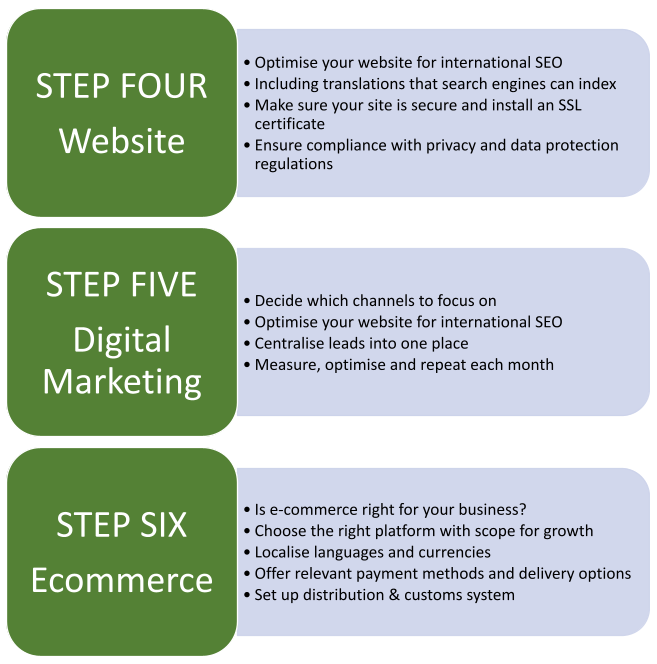

Consider your international marketing strategy carefully. It does not need to cost a fortune, but it does require careful planning and a targeted approach. Follow our checklist and you won’t go far wrong.
For help and support with your international marketing give us a call.
Now is the time to re-evaluate your global footprint and look to new countries for your international expansion. Look to where trade agreements are in place and economies are booming for the opportunities.
Often the easiest way to enter a market appears to be through a local distributor This is a low-risk strategy on the face of it, certainly from a fixed cost perspective.
A Distributor is a local company that will buy your product, market and sell it themselves. You rely on them to generate the leads and secure new business. They are your customer in the target market. In fact, if you enter into an exclusive agreement, they will be your only customer! You invoice them, they invoice the end user and take the corresponding credit risk.
A distributor may well have a strong name in the market, which will quickly help you to gain market awareness and confidence in your product/service. Market entry can be quicker and penetration deeper due to the distributors’ connections.
On the other hand, your identity and brand can become lost, with the distributor the stronger presence. The customer is used to dealing with them, you may not have a direct relationship at all. What happens if you decide to change distributor, or they opt to drop your product? You could be back virtually to square one.
A distributor may also overcome the currency issue too, as you can sell to them in your home currency, and they can sell to the customer in the local currency. On the other hand, you have all your credit eggs in one basket with a distributor and may well have a greater overall exposure.
If you decide to use a distributor, it is critical to make the right choice. Get this wrong and it can severely disrupt your progress in the market.
Do not rush in, take your time to assess potential candidates, talk to more than one. Visit them, get a feel for the company, who their customers are. Do they really specialise in your market sector?
Here are some top tips to finding the right distributor:
- Research into the market to see if any names keep coming up. Is there a stand-out candidate company you would really like to get on board?
- Ask around. Let the market know you are looking and ask for recommendations.
- Check with potential customers if they would recommend anyone.
- Look at the exhibitors or delegates at recent or future conferences.
- Check the advertisers in relevant magazines or journals.
- Look at the members of any relevant trade association.
- Do a web search.
- Ask for support from the Commercial section of your embassy in the country.
- Check who your competitors use. Could they be tempted away?
In short, look at all possible avenues to create a target list of names to contact and explore. Approach them with details of your product or service. Evaluate them to shorten the list to those who show the most interest, combined with the required market presence and potential.
It is very important to choose carefully. This distributor will be the face of your company in the market. You may well be judged by who you are associated with. Make sure they have a good solid reputation and a long-standing interest in your market.
Also, look at their existing portfolio of products or services. Who do they already represent? Are they complementary or competing? Are they operating in the right market sector? Do they appear to have a lot of products already for the resources at their disposal? Is this a concern?
A well-connected representative can be worth their weight in gold in helping you make entry into the market. With the right connections they can fastrack you in front of the right customers, but beware those who promise amazing things when in reality they are either already fully committed, not in the right market space or have conflicts of interest.
It is not unheard of for a supplier to be tied up for years with a distributor who either cannot, or deliberately does not, market it aggressively. Be wary of those who profess to be well connected or related to the Prince or Government Minister.
Once you have narrowed it down to one or two potential companies, suggest a loose working relationship to start with until you are both sure you are a good fit. See if they produce the goods, open the right doors and hopefully secure some orders before rushing into an exclusive or long-term contract. Remember making the right choice is critical to the success of your market entry strategy. It can be a complicated and time-consuming process. For this reason, we developed our PartnerTrack service to lead the search and help select the right partners for their business.
Welcome to our first Expert Exporter Newsletter of 2022. Just a month into the year, and what a busy month it has been. Full of new rules for importers into the UK.
1st January saw a number of new challenges for any UK or International company looking to import goods into the country. To help clarify the changes we have produced a FREE 7 KEY CHALLENGES TO TRADE POST-BREXIT download, which covers in detail the areas you need to be aware of and to plan for.
We are also presenting a series of Webinars for The Cabinet Office and Enterprise Nation explaining the changes which you may find useful.

HS Code
Everything starts with the HS Code which defines your product for customs and determines duty rates, licences, approvals, procedures etc. Following a review by the World Customs Organisation some HS codes have been changed, so check yours now to make sure it is still correct.

Customs Declarations
In 2021 importers to the UK could delay full customs declarations by up to 175 days. This easement no longer applies in 2022. Importers must therefore ensure they have the required information at hand to make a full customs declaration at the time of import. No declaration, no import!

Rules of Origin
To claim preferential rates of duty under the UK-EU Trade & Cooperation Agreement it is now necessary to hold supporting evidence of the true origin of your products. This means documents such as a Suppliers Declaration. Without evidence, duty may well be applied and could even be backdated.

Pre-Notification of Imports
Animal or plant products now need to be pre-registered on the new IPAFFS (Import of Products, Animal, Food, Feed System) IT system before entry into the UK. All required certificates & licences are needed. There are increased controls at ports and from 1st July special Border Control Posts will be used.

Goods Vehicle Movement Service (GVMS)
Hauliers and businesses transporting their own goods through major ports need to register with GVMS and pre-register movements in/out of the UK to receive a Goods Movement Reference (GMR). No GMR, no crossing the border!!

VAT
The way VAT is accounted for on imports and exports is an important change post-Brexit and requires careful consideration. There are different rules for B2C and B2B which can affect supply chains and distribution methods. Ask for advice to find the best solution for your business.
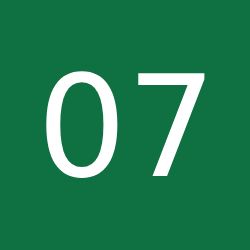
Incoterms
Incoterms define who is responsible for what in an import/export transaction such as customs declarations, VAT, duties & freight costs. Agree terms carefully and understand the implications. Mistakes can be expensive and lead to unnecessary administrative burdens.
There is a lot more detail on each of the 7 challenges in our FREE download. We also offer a range of cost-effective support, from answering a single question through to a complete review to help implement the most efficient operating model for your business.
With the right planning and support the challenges are surmountable and once conquered will open up a whole world of new opportunities for your business.
Welcome to the final Expert Exporter Newsletter of 2021. Hard to believe it’s nearly the end of the year! What an eventful 12 months it has been, with Covid and Brexit impacting on business. Yet the world still spins, and some prosper, making the most of new opportunities, whilst others struggle to come to terms with the challenges.
At Go Exporting we have been extremely busy supporting many clients through the challenges of Brexit, helping others expand into new international markets, providing webinars and training on exporting, working with the likes of Alibaba USA, Enterprise Nation, Business Wales, the British Library, trade associations and banks.
We are proud to have been voted one of the Top 5 Export Consultants and Top 50 Advisors of any category by Enterprise Nation.
Thoughts now turn to 2022 and what the New Year will bring. Covid is still with us, and it looks like we’ll have to learn to live with it, carry on regardless. The challenges of Brexit remain and with the rules tightening in 2022 there seems no let up.
In our last newsletter, we looked at Rules of Origin, that they will be more strictly enforced and how businesses need to be prepared to prove the provenance of their products. If you have not already looked into this, there is no time to lose.
For further information, we are running a Lunch and Learn with Enterprise Nation on this subject on 14th December. Register via this link https://www.enterprisenation.com/find-something/lunch-and-learn-rules-of-origin-about-to-bite/
For UK companies, 2022 also means Customs Declarations will become due at the time of import. The ability to delay declarations for 6 months, introduced by the Government to ease the EU exit for importers, comes to end. Are you ready? Have you submitted all your supplementary declarations for this year? HMRC is starting to chase down missing declarations and you may incur duty and other costs if you have not completed yours in time. If you are struggling to submit in time, we can help.
More than anything though, here at Go Exporting we enter 2022 with a sense of anticipation and excitement at the world of opportunities opening up for exporters. The time is now right to look to new markets, evaluate the prospects and set a path to international expansion.
This week we ran a webinar on the opportunities in the often-overlooked Switzerland market with our official Swiss partners, Prodigo. The Swiss economy has already bounced back to pre-Covid levels and it offers one of the highest levels of disposable income in the world. Next year also sees the removal of import duties on many industrial imports, so now really is a good time to look at this market. If you missed the webinar you can view a recording on our website.
It just remains for us to wish you a very Merry Christmas and an extremely Prosperous New Year – with the help of Go Exporting of course!
It’s November already, where has the year gone to?!
In the UK thoughts are turning to Bonfire Night on November 5th, where we celebrate a failed gunpowder plot to kill King James 1 in 1605 with fireworks and bonfires across the country.
Fireworks of a different kind are about to hit UK and EU exporters under the Trade and Cooperation Agreement’s clauses concerning Rules of Origin. From 1st January 2022 businesses will have to demonstrate they are compliant with the new rules and be able to prove the origin of their products.
Up to now, there has been a grace period where a simple statement of origin has sufficed, and the rules have not been strictly enforced. Whilst this has helped to smooth the EU exit transition, it has led to a false sense of security for many exporters as they have not been challenged on origin. From next year this may change, and they need to hold proof in order to continue to benefit from tariff-free trade. This applies equally to UK and EU exporters to the other’s territory.
Many businesses are reportedly underprepared and unaware of just how much evidence they’ll have to provide in order to gain tariff-free access.
The UK-EU Trade & Cooperation Agreement contains 50 pages on how rules of origin work following Brexit. Every business that exports need to be aware of these. There are different rules for different products, so it is not straightforward. Many do not have the manpower or expertise to fully evaluate the situation.
To claim UK or EU origin, a product must be made up of a certain amount of originating components or constituent parts. The level required varies by product, with many being around 50%. EU and UK parts can count towards the origin of the other, but only if they have been sufficiently worked in the other’s territory. This means if you are a UK manufacturer and you import components from the EU, you can only claim them towards UK origin if you have worked them sufficiently in the UK. Simple re-packaging does not count.
Marks & Spencer fell foul of this rule with their Percy Pig sweets which they import from Germany and then exported to Ireland without any change in the product. In this scenario, import duty becomes due on the product. There are ways around this, for example using Customs Special Procedures, which we can advise upon.
To claim UK or EU origin you must hold sufficient evidence to prove this. There can, and most likely will, be checks moving forward, particularly if the relationship between the UK and EU worsens, for example surrounding fishing rights or Northern Ireland.
In 2020 we presented a webinar calling Rules of Origin: the greatest Brexit challenge you’ve never heard of. That’s about to change as everyone becomes acutely aware of the challenges. Time is short, now is the time to act and gather the evidence you need to prove origin.
As a starting point, we have produced a free Rules of Origin Guide and Workbook which takes you through a step-by-step process on how to evaluate the true origin of your products. Download your copy here today.
Or contact us for further details and support on +44 (0)800 689 1423 and email info@goexporting.com.
The conference and exhibition season is starting and this year the events are mostly back to normal rather than virtual. That’s a relief for many. Time to get away from Zoom and engage in person with potential customers and distributors from new international markets.
Video calling has its place in developing an export market. A lot of time and money can be saved by holding those initial meetings virtually. It’s important your sales team knows how to sell via a screen though. It’s different and definitely not natural for most experienced export salespeople. They are skilled at developing relationships face to face and building trust over time.
The personal meeting will still have an important role to play, however. It is predicted that conferences will become more important as a focal point for arranging meetings rather than spending endless hours travelling from one client to another in a foreign country.
Making the most of those events is therefore critical to their success. Don’t leave it to chance that your ideal customer or partner will be there and come to visit your stand at just the right moment when you are free to spend time with them. Planning and preparation are key. Here’s a handy checklist:
- Book the conference early and plan your schedule around it
- Request a speaker slot to make a presentation which raises your profile and highlights your expertise
- Book accommodation in the recommended hotels to maximise networking opportunities. An extra $100 a night is value for money if it means you make more new contacts
- Make sure your display and marketing material are prepared well in advance
- Draw up a hit list of who you would like to meet at the event and make appointments. Start early as it may take several touchpoints to get their attention.
- At the event be alert and proactive. Don’t sit on your computer. Look for opportunities.
- Network, network, network. The person stood next to you may be your new biggest customer!
- Talk to other exhibitors, even your competitors. You never know what you may find out.
- Keep good notes on who you’ve met and what you talked about. Don’t rely on your memory, it will fail you.
- After the event, be sure to follow up promptly and take any actions you promised to your new contacts.
- Follow up again………….and again
In short, leave nothing to chance. You are investing in the event, both your time and money, so you need to make the most out of it.
Read more: Driver shortages, health certificate delay & post-Brexit FastTrack reviews
We often support clients at conferences and exhibitions; helping them plan their pre-event marketing; arranging meetings; manning their exhibition stands and more. For further details call +44 (0)800 689 1423 and email info@goexporting.com.






